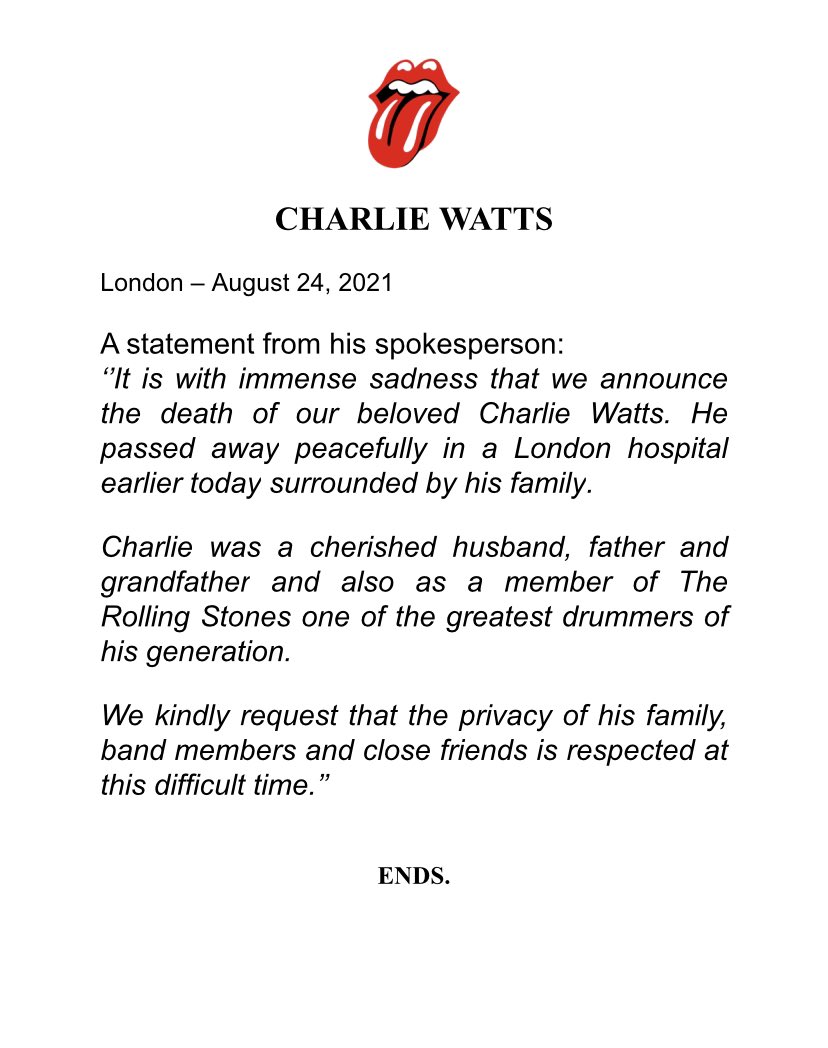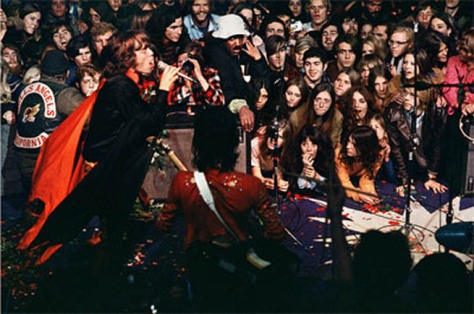By Dennis Hartley
(Originally posted on Digby’s Hullabaloo on August 7, 2023)

*sigh* One by one, the giants continue to fall:
William Friedkin, the Oscar-winning director behind The French Connection and The Exorcist who was one of the most admired directors to emerge from a wave of brilliant filmmakers who made their mark in the 1970s, died Monday. He was 87.
Friedkin died in Los Angeles, his wife, former producer and studio head Sherry Lansing, said.
His pictures, which also included 1977’s Sorcerer, 1985’s To Live and Die in L.A. and 2006’s Bug, were marked by an exceptional visual eye, a willingness to take what might have been a genre subject and treat it with high seriousness and a sense of how sound could add a subterranean layer of dread, mystery and dissonance to his stories — a haunted and haunting quality that lifted his visceral works into another realm, conveying a preternatural sense of “fear and paranoia, both old friends of mine,” as he said in his 2013 memoir, The Friedkin Connection.
Fear and paranoia. I’m not a religious person, but I distinctly remember jumping out of my seat and shouting “JESUS CHRIST!” about a dozen times the first time I saw The Exorcist.

It truly freaked me out, affecting me on a primal level like no other film I’d seen; to this day the very thought of sitting through it again makes me recoil. I remember feeling anger toward the filmmaker for triggering months of nightmares and lingering heebie-jeebies.
I was still in high school; I didn’t know from auteur theory or what a two-shot was…but I’d been to two world’s fairs and a rodeo and could sense that there was “something” about the atmosphere, the immersive nature of this film that raised the bar for horror tropes; there was a cinematic alchemist at the helm (“how did he do that to me?!”).
More from the Hollywood Reporter obit:
He was part of a brilliant generation of filmmakers who upended the studio system, making movies that were provocative, individualistic and anti-authoritarian. Several of its members at one time joined forces to create The Directors Company in an attempt to give themselves the independence they cherished, though internal disagreements led to its dissolution, not long after they had collectively turned down Star Wars.
About that “brilliant generation”…I “discovered” Friedkin’s 1971 crime drama masterpiece The French Connection, as well as the work of many of his contemporaries in a sort of ass-backward way-as I recounted in a 2017 piece about the death of the neighborhood theater:
Some of my fondest memories of the movie-going experience involve neighborhood theaters; particularly during a 3-year period of my life (1979-1982) when I was living in San Francisco. But I need to back up for a moment. I had moved to the Bay Area from Fairbanks, Alaska, which was not the ideal environment for a movie buff. At the time I moved from Fairbanks, there were only two single-screen movie theaters in town. To add insult to injury, we were usually several months behind the Lower 48 on first-run features (it took us nearly a year to even get Star Wars).
Keep in mind, there was no cable service in the market, and VCRs were a still a few years down the road. There were occasional midnight movie screenings at the University of Alaska, and the odd B-movie gem on late night TV (which we had to watch in real time, with 500 commercials to suffer through)…but that was it. Sometimes, I’d gather up a coterie of my culture vulture pals for the 260-mile drive to Anchorage, where there were more theaters for us to dip our beaks into.
Consequently, due to the lack of venues, I was reading more about movies, than watching them. I remember poring over back issues of The New Yorker at the public library, soaking up Penelope Gilliat and Pauline Kael; but it seemed requisite to live in NYC (or L.A.) to catch all these cool art-house and foreign movies they were raving about (most of those films just didn’t make it out up to the frozen tundra). And so it was that I “missed” a lot of 60s and 70s cinema.
Needless to say, when I moved to San Francisco, which had a plethora of fabulous neighborhood theaters in 1979, I quickly set about making up the deficit. While I had a lot of favorite haunts (The Surf, The Balboa, The Castro, and the Red Victorian loom large in my memory), there were two venerable (if a tad dodgy) downtown venues in particular where I spent an unhealthy amount of time in the dank and the dark with snoring bums who used the auditoriums as a $2 flop: The Roxie and The Strand.
That’s because they were “repertory” houses; meaning they played older films (frequently double and triple bills, usually curated by some kind of theme). That 3 years I spent in the dark was my film school; that’s how I got caught up with Francis Ford Coppola, Stanley Kubrick, Martin Scorsese, Robert Altman, Hal Ashby, Terrence Malick, Woody Allen, Sidney Lumet, Peter Bogdanovich, Werner Herzog, Ken Russell, Lindsay Anderson, Wim Wenders, Michael Ritchie, Brian De Palma, etc.
I have probably seen The French Connection 25 times; if I happen to stumble across it while channel-surfing, I will inevitably get sucked in for a taste of Friedkin’s masterful direction, Ernest Tidyman’s crackling dialog (adapted from Robin Moore’s book), Gene Hackman and Roy Scheider’s indelible performances, or a jolt of adrenaline:
Gerald B. Greenburg picked up a well-deserved Oscar for that brilliant editing. Statues were also handed out to Friedkin for Best Director, producer Philip D’Antoni for Best Picture, Hackman for Best Actor (Scheider was nominated, but did not win for Best Supporting Actor), and Tidyman for Screenplay Based on Material from Another Medium.
Just as his films were uncompromising and “in your face”, when it came to speaking his mind, Friedkin was certainly no shrinking violet. I found his irascibility endearing-like the sampling in this tribute Tweet posted today:
Don’t hold back. Tell us how you really feel, Bill! Irascible …and irreplaceable.
In addition to the obvious “must-sees” The Exorcist (if you dare) and The French Connection, here are a few more Freidkin recommendations for movie night:

The Boys in the Band – Friedkin’s groundbreaking 1970 film adaptation of Mart Crowley’s off-Broadway play centers on a group of gay friends who have gathered to celebrate a birthday, and as the booze starts to flow, the fur begins to fly. It may not seem as “bold” or “daring” as perceived over 50 years ago (and many contemporary viewers will undoubtedly find certain stereotypes of the time to be problematic), but what the narrative reveals about human nature is universal and timeless.
It’s one of the best American dramas of the 1970s; a wicked verbal jousting match delivered by a crackerjack acting ensemble so finely tuned that you could set a metronome to the performances (Crowley adapted the screenplay). The production is also unique for enlisting the entire original stage cast to recreate their roles onscreen. Warning: Burt Bacharach’s “The Look of Love” will be playing in your head for days on end.

Sorcerer – The time is ripe for a re-appraisal of Friedkin’s expertly directed, terrifically acted update of Henri-Georges Clouzot’s classic 1953 noir, The Wages of Fear. This existential action adventure (which I think is closer in spirit to Herzog’s Aguirre, the Wrath of God than Clouzot’s original film) was greeted with indifference by audiences and critics when it was released in 1977. Maybe it was the incongruous title, which likely led many to assume it would be in the vein of his previous film (and box-office hit), The Exorcist. Then again, it was tough for any other film to garner attention in the immediate wake of Star Wars.
Roy Scheider heads a superb international cast as a desperate American on the lam in South America, who signs up for a job transporting a truckload of nitroglycerin through rough terrain. Excellent screenplay by Walon Green. Tangerine Dream provides a memorable soundtrack. They don’t make ‘em like this anymore-a genuinely pulse-pounding adventure that slips in a fair amount of subversive political commentary.

Killer Joe – This 2012 film is a blackly funny and deliriously nasty piece of late-career work from Friedkin. Jim Thompson meets Sam Shepherd (with a whiff of Tennessee Williams) in this dysfunctional trailer trash-strewn tale of avarice, perversion and murder-for-hire, adapted for the screen by Tracy Letts from his own play. While the noir tropes in the narrative holds few surprises, the squeamish are forewarned that the then-76 year-old Friedkin still had a formidable ability to startle unsuspecting viewers; proving you’re never too old to earn an NC-17 rating. How startling? The real litmus test occurs during the film’s climactic scene, which is so Grand Guignol that (depending on your sense of humor) you’ll either cringe and cover your eyes…or laugh yourself sick. (Full review)

To Live and Die in L.A. – Essentially a remake of The French Connection (updated for the 80s), Friedkin’s fast-moving, tough-as-nails 1985 neo noir ignites the senses on every level: visual, aural and visceral.
Leads William Peterson (as an obsessed treasury agent) and Willem Dafoe (as his criminal nemesis) rip up the screen with star-making performances (both were relative unknowns). While the narrative adheres to familiar “cop on the edge” tropes, there’s an undercurrent of weirdness throughout that makes this a truly unique genre entry (“The stars are God’s eyes!” Peterson’s girlfriend shrieks at him at one point, for no apparent reason). Friedkin co-adapted the screenplay with source novel author Gerald Petievich.
Friedkin’s hard-boiled L.A. story is painted in dusky orange, vivid reds and stark blacks; an ugly/beautiful noir Hell rendered by the late great cinematographer Robby Müller (who worked extensively with Wim Wenders and Jim Jarmusch). The icing on the cake is Wang Chung’s ace soundtrack, woven seamlessly into the narrative by Friedkin and editor M. Scott Smith. This sequence alone is worth the price of admission (not to mention a masterclass in editing…if not counterfeiting):































 Stalwart to the end, Charlie Watts was the “rock” in rock ‘n’ roll. Solid, reliable, resolute. He sat Sphinx-like behind his kit for over 50 years, laying down a steady beat while remaining seemingly impassive to all the madness and mayhem that came with the job of being a Rolling Stone. He was cool as a cucumber, as impeccably tailored and enigmatic as Reynolds Woodcock. “Reynolds Who?”
Stalwart to the end, Charlie Watts was the “rock” in rock ‘n’ roll. Solid, reliable, resolute. He sat Sphinx-like behind his kit for over 50 years, laying down a steady beat while remaining seemingly impassive to all the madness and mayhem that came with the job of being a Rolling Stone. He was cool as a cucumber, as impeccably tailored and enigmatic as Reynolds Woodcock. “Reynolds Who?” 





